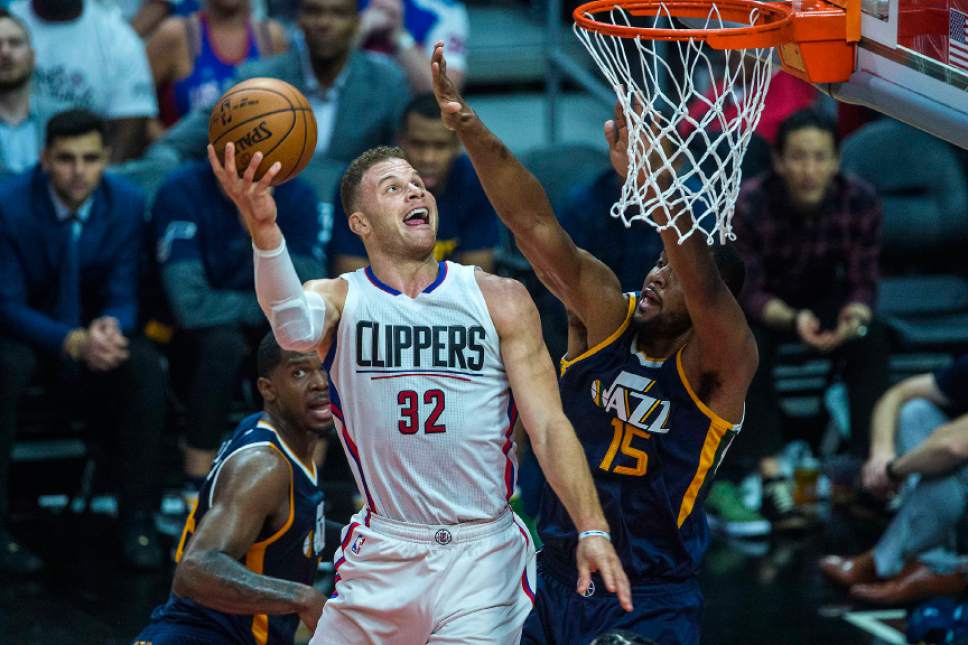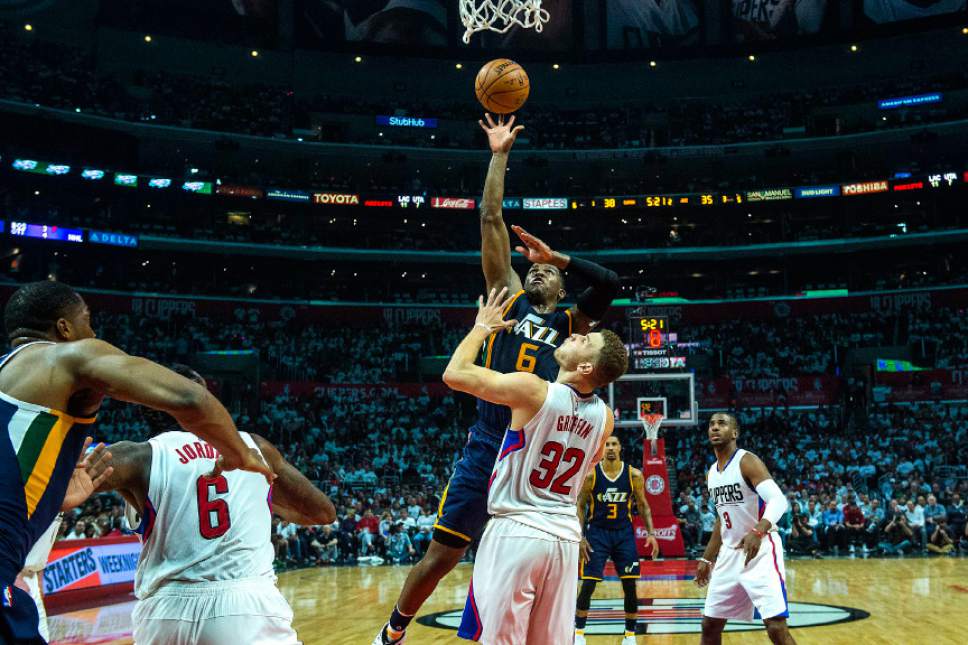This is an archived article that was published on sltrib.com in 2017, and information in the article may be outdated. It is provided only for personal research purposes and may not be reprinted.
Rodney Hood's vantage point in those moments is fairly exclusive, but he's about like everyone else in the building when Jazz teammate Joe Johnson takes the ball and dribbles … backs in … keeps dribbling … and, finally, shoots.
"It's great to watch," Hood said. "We're comfortable just watching him go to work in those situations."
Hood's involvement occasionally transcends a spectating role. In the Jazz's Game 4 playoff victory over the Los Angeles Clippers last Sunday, Johnson passed to Joe Ingles, Hood and Ingles again for critical 3-pointers after being double-teamed.
Johnson's isolation game is a major component of the Jazz's offense, which seemingly runs contrary to the way the franchise has operated for more than 30 years and goes against everything that coach Quin Snyder preaches about passing and movement. The Iso Joe element is more like the Al Jefferson days of earlier this decade, when he operated in the low post and the offense often stagnated.
But it is working for the Jazz in this series, which they hope will end in Friday's Game 6 at Vivint Smart Home Arena. Johnson's late-game offensive success has been vital in all three Jazz victories, as Snyder has exploited a player who thrives in those moments.
"I just try to be patient, get to a sweet spot and make the right play," Johnson said.
Snyder has gone beyond incorporating Johnson's game, relying on him in the final minutes. Personnel issues partly explain Johnson's expanded role at power forward lately. Derrick Favors missed most of March with an injury, then has played center against the Clippers after Rudy Gobert was hurt in Game 1. In Game 4, Gordon Hayward played only nine minutes due to illness, so more offense was needed from Johnson.
Regardless, he keeps responding.
"Philosophically, for me offensively, you want to put your players in the best position to be successful," Snyder said after Thursday's practice. "The way we play best offensively is when the ball moves … [but] as the game gets tight, particularly when the game gets physical, it's harder to move. When you've played a team a lot, they know where you're trying to go."
So Snyder plays along. "For a coach, you need to adapt to how you see the game," he said, "based on situations."
That usually means Joe, in the Iso. Johnson has made 8 of 10 shots in the four games (three Jazz wins) of the series when the margin was five points or fewer in the last five minutes. He also has four assists.
That clutch production is even more than the Jazz could have expected from Johnson when they signed him as a free agent last summer at age 35. They knew they were acquiring a reliable scorer who averaged 21.2 points in 12 playoff games for Brooklyn in 2014 and 12.1 points in 14 games with Miami last season.
Yet other than the season-opening game at Portland, where Johnson scored 29 points in Hayward's absence, few signs surfaced during the season to suggest he would have this kind of impact in the playoffs. Johnson scored 20-plus points only two other times, while producing shooting nights such as 0 for 4, 0 for 5, 0 for 5, 1 for 7 and 1 for 8.
Here he is, though, thriving at the end of playoff games, when it really matters. Imagine where the Jazz would be if not for Johnson's response Sunday. They trailed by seven points in the last seven minutes, before he scored 11 straight Jazz points — including tying and go-ahead shots. Through five games, he's averaging 18.2 points.
"He's always comfortable in those moments," Snyder said, "but he's gotten more and more comfortable with his teammates, and his teammates see him in that role. So we want to do what we can to take advantage of who he is."
That means embracing Iso Joe and his winning methods, even if his skill set in some ways makes him the Anti-Jazzman.
kkragthorpe@sltrib.com Twitter: @tribkurt







